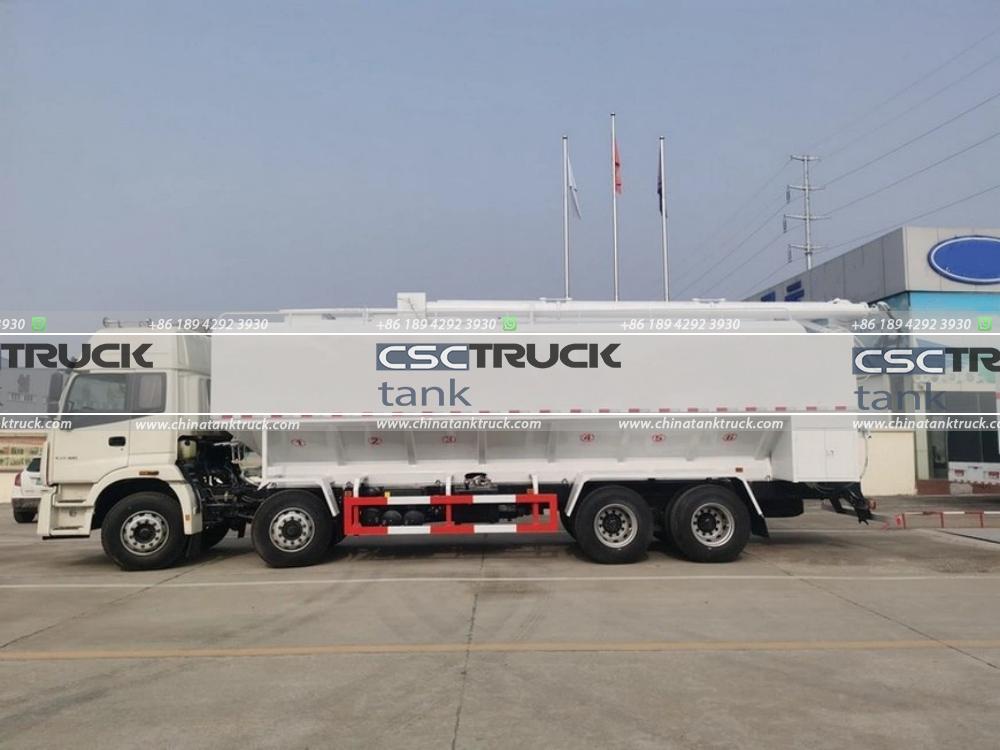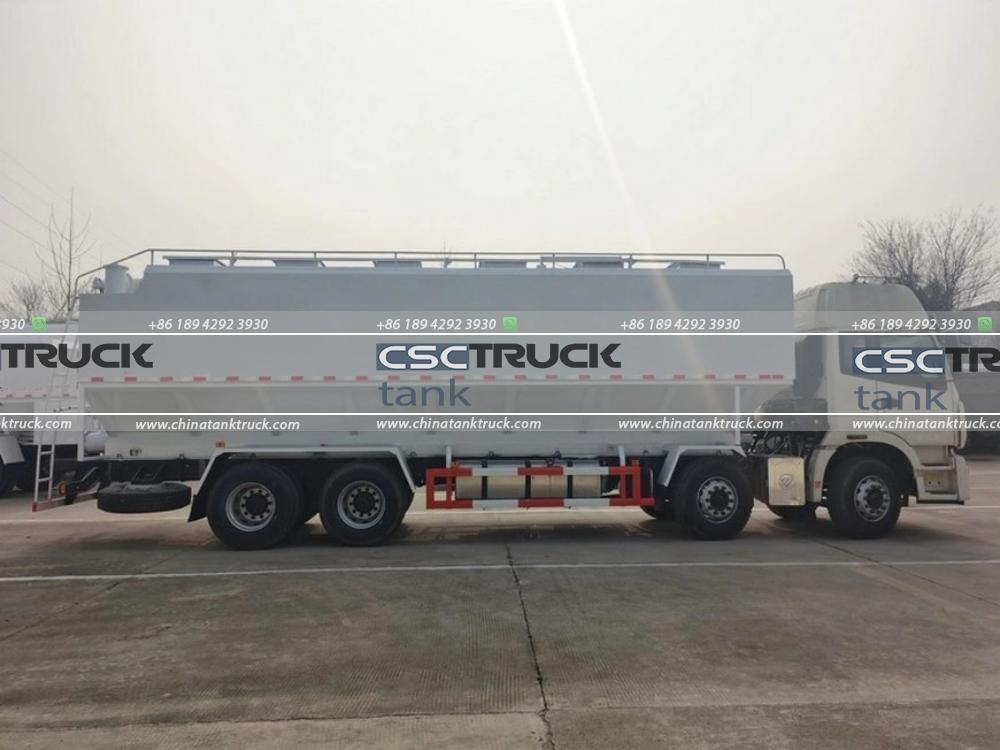What Do Dry Bulk Tanks Carry?
Dry bulk tanks, a key component of the transportation industry, are specialized containers or trailers designed to move granular, powder, or other dry bulk materials. These tanks are widely used for transporting various non-liquid goods across industries such as construction, food processing, agriculture, chemicals, and manufacturing. The key difference between dry bulk tanks and other types of containers, like liquid tankers, lies in the cargo they transport. Dry bulk tanks are primarily used for goods that are dry and do not flow like liquid. Their unique design ensures that the cargo is kept secure and stable during transportation, and they are essential for moving materials in bulk quantities, reducing the need for repeated small-scale shipments.
In this article, we will explore the different types of materials that dry bulk tanks carry, how these tanks are designed to handle various goods, and their relevance across several industries.
Common Types of Cargo Carried in Dry Bulk Tanks
Dry bulk tanks are designed to handle a wide variety of dry goods, ranging from powdered materials to large granular products. Below are some of the most commonly transported materials:
1. Cement and Construction Materials
One of the most prominent uses of dry bulk tanks is for the transportation of cement, a key raw material in the construction industry. Cement is a fine powdery substance that, when mixed with water, hardens to form concrete, which is vital for building infrastructures like roads, bridges, and buildings. Dry bulk tanks offer an ideal solution for cement transportation as they are designed to keep the material dry and free from contamination.
In addition to cement, dry bulk tanks are also used to carry other construction materials such as sand, lime, fly ash, gypsum, and silica. These materials are transported in bulk quantities to construction sites, ensuring that the necessary supplies are readily available when needed.
2. Grain and Agricultural Products
Agriculture is another major sector that relies on dry bulk tanks. These tanks are used to transport bulk quantities of grains such as wheat, corn, barley, oats, and soybeans. Farmers and agricultural companies use dry bulk transportation to move harvested crops to storage facilities or directly to processing plants.
Besides grains, dry bulk tanks are also used to carry other agricultural products such as fertilizer and animal feed. The design of dry bulk tanks ensures that these materials remain dry and are efficiently unloaded using pneumatic or mechanical systems.
3. Plastic Pellets and Resins
In the manufacturing sector, dry bulk tanks are crucial for transporting plastic pellets and resins, which serve as the raw materials for plastic production. These materials are typically small granules that can be melted down and molded into various products. Plastic pellets are transported in large quantities to factories where they are processed into items such as containers, packaging, automotive parts, and more.
Dry bulk tanks provide a safe and efficient means of transporting plastic materials without exposing them to moisture or contamination, which could degrade their quality. The tanks are sealed and often equipped with special unloading systems to ensure that the materials can be discharged cleanly and quickly.
4. Chemicals and Minerals
Certain types of dry bulk tanks are specifically designed to handle sensitive materials such as chemicals and minerals. Dry chemicals like sodium carbonate, sulfur, calcium carbonate, and magnesium oxide are often transported in bulk for use in industries like water treatment, manufacturing, and mining.
For example, sodium carbonate (soda ash) is an essential material used in the production of glass, detergents, and paper. Dry bulk tanks equipped with airtight seals and corrosion-resistant coatings are used to transport chemicals safely, ensuring that they do not become contaminated or pose a hazard to the environment.
Similarly, minerals such as limestone, clay, and borates are commonly transported in dry bulk tanks. These materials are critical for industries such as steel production, ceramics, and fertilizer manufacturing.
5. Food Products
The food industry also utilizes dry bulk tanks for transporting large quantities of powdered or granular food items. Common food products transported in dry bulk tanks include flour, sugar, rice, cocoa, salt, and starch. These tanks are typically designed with food-grade linings to prevent contamination and meet strict hygiene regulations.
Pneumatic unloading systems are often used for food products, as they allow the materials to be discharged without exposure to air, moisture, or contaminants. The tanks used for food transportation are subjected to rigorous cleaning and inspection processes to ensure the safety and quality of the food products being transported.

Design and Structure of Dry Bulk Tanks
Dry bulk tanks are built to handle large quantities of material efficiently, and their design is tailored to the specific needs of the cargo they carry. Several key features distinguish dry bulk tanks from other types of containers or trailers.
1. Sealed Compartments
Dry bulk tanks are equipped with sealed compartments to prevent the ingress of moisture, dust, or other contaminants. This is especially important for materials like cement, chemicals, and food products, which must remain clean and dry throughout transportation. The tanks are typically made from materials such as stainless steel or aluminum to provide a lightweight yet durable structure.
2. Aeration and Pneumatic Unloading Systems
One of the key features of dry bulk tanks is the pneumatic unloading system, which uses pressurized air to discharge the cargo. This system is highly efficient, especially for powdered materials, as it ensures that the cargo is evenly unloaded and with minimal waste. Aeration systems may also be included to help fluidize the material, making it easier to move.
3. Compartmentalization
Dry bulk tanks may be compartmentalized to transport different materials simultaneously or to allow for easy segregation of goods during transportation. This feature is particularly useful for transporting various grades of the same material or for industries requiring multiple raw materials at a site.
4. Safety Features
Given that some materials transported in dry bulk tanks can be hazardous, these tanks are often equipped with safety features such as pressure relief valves, corrosion-resistant coatings, and secure seals. Tanks used to transport chemicals may also require special certifications to ensure that they comply with safety and environmental regulations.
Industries That Rely on Dry Bulk Tanks
Several industries depend heavily on dry bulk tanks for their operations:
– Construction: Cement, sand, and other construction materials are transported to construction sites using dry bulk tanks.
– Agriculture: Grains, fertilizer, and animal feed are delivered to farms and processing plants via bulk tanks.
– Manufacturing: Plastic resins and other raw materials are essential for plastic and polymer production.
– Food Processing: Dry bulk tanks play a vital role in the food industry by transporting large volumes of food products such as sugar, flour, and rice.

Conclusion
Dry bulk tanks are an indispensable part of the supply chain, providing a safe, efficient, and cost-effective method of transporting a wide variety of dry goods. From construction materials and agricultural products to chemicals and food items, these tanks are designed to meet the diverse needs of industries worldwide. As logistics and transportation continue to evolve, dry bulk tanks will remain a critical asset for moving bulk materials across the globe.

